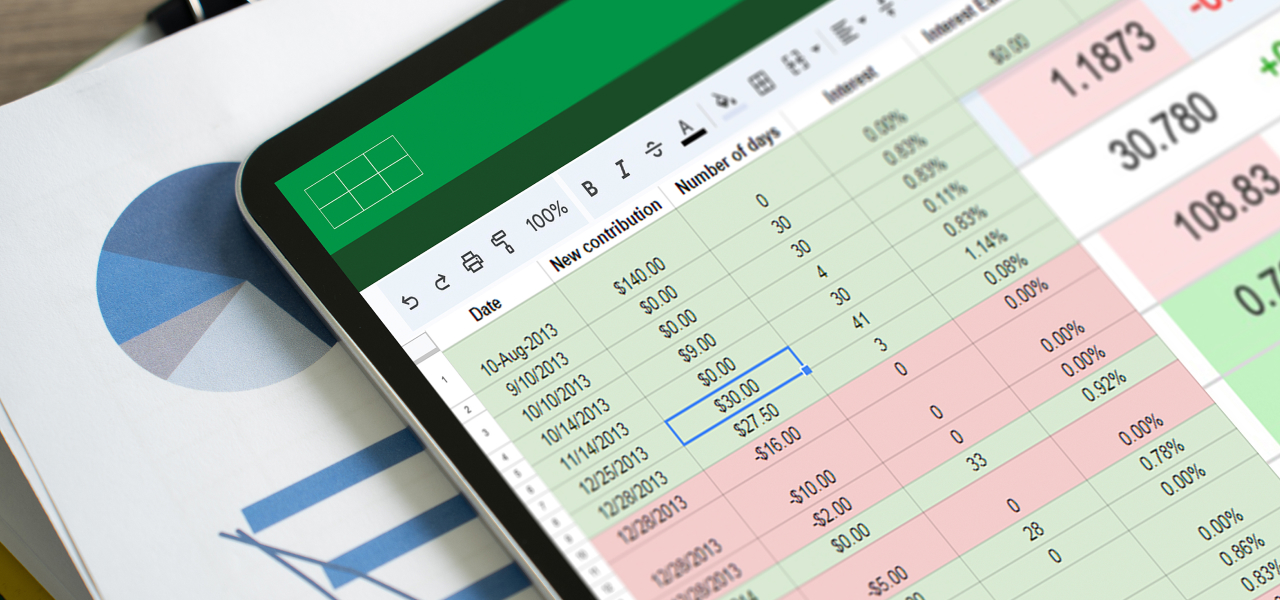Complex Deals in Family Offices
Family offices navigate a maze of investments, ranging from direct private equity stakes and co-investments to landmark properties and bold venture plays. Term sheets arrive loaded with subtle clauses and ticking deadlines, yet many teams still trade spreadsheets as if the cloud never appeared. Blind spots multiply, and a single stray decimal can vaporize seven figures. In this climate modern deal-screening technology shifts from convenience to necessity. A capable platform uncovers red flags early, safeguarding both capital and reputation.
Risks and Inefficiencies Without the Right Tech
Investment data ends up scattered across spreadsheets, emails, and disparate systems. Without a single source of truth, it’s hard for stakeholders to get a transparent view of the whole portfolio’s exposure or the details of a deal. Decision-makers often rely on information that is incomplete or out of date, which can lead to misinformed choices. In fact, many offices remain stuck in “spreadsheet and calculator” mode that cannot adapt to the proliferation of investment types or entities, making it impossible to get a holistic picture of the family’s wealth. One of the biggest threats is simply not knowing where the money is at any given time, some families only receive consolidated wealth reports weeks or months after a period closes. In fast-moving markets, that lack of real time transparency can prove disastrous if you need to rebalance or make a quick decision.

Manual Errors and Unreliable Processes
Relying on manual data entry and Excel formulas means mistakes are almost guaranteed. Studies estimate that nearly 90% of spreadsheets contain errors, and about half have material defects. These errors are not trivial, even major financial institutions have learned this the hard way. For example, an investment bank advising on Tesla’s acquisition of SolarCity inadvertently undervalued the deal by $400 million due to a spreadsheet mistake (double-counting SolarCity’s debt). In another case, a formula error in Excel caused a $100 million discrepancy in the sale price of a software company. If billion-dollar firms can slip up, a lean family office using similar manual methods is equally (if not more) vulnerable to costly miscalculations. Errors in deal models or tracking sheets can lead to overpaying for an investment, misallocating funds, or overlooking critical red flags.
Traditional back office tools often cannot produce the timely, comprehensive reports that family offices need for complex deals. Many offices that stick with basic accounting software or custom-built legacy systems find they can’t easily aggregate data across private partnerships, trusts, real estate holdings, and marketable securities. It can take weeks, even months, to collect and reconcile data across various entities without automation. By the time a consolidated report is ready, the information is stale. This lag leads to reactive decision-making. Furthermore, reporting tends to be ad hoc and spreadsheet based, which makes it harder to spot patterns or issues. If each asset class or deal is tracked in isolation, the office might miss the overall risk exposure or fail to notice when a particular investment is underperforming until it’s too late. Limited reporting also hinders communication with family members who expect clear updates, a 30-day lag for a portfolio report is no longer acceptable when younger generations expect on demand, real time information.
Resource Drain & Operational Stress
Without proper infrastructure, evaluating a new deal becomes a resource-intensive firefight. Staff may scramble to pull data from multiple custodians and fund managers, then normalize and combine it by hand. This not only takes time but also diverts talent from higher value analysis. It’s common to see highly skilled investment professionals spending their days re-keying data or debugging Excel macros instead of comparing deal fundamentals. Such manual workflows don’t scale. As one family office technology expert noted, a lower end system might work for a small portfolio, but as you grow into complicated entities or higher volumes, these systems “tend to slow or burst” under the strain. The result is often a patchwork of workarounds that only adds more fragility to the process. For example, one family office executive described how a CIO pursued direct investments without a proper infrastructure or plan, lacking a systematic way to evaluate whether those deals fit the office’s expertise or allocation strategy, the team ended up with several underperforming investments. It was a sobering reminder that without robust processes and data, even savvy investors can stumble.
Why Traditional Tools Like Excel Fall Short
The traditional patchwork of Excel and entry-level software can’t keep up with the complexity and pace of modern family office investments. As the president of a fintech firm noted, these “Band Aid” solutions often don’t address the core problem, data integration and aggregation, leaving staff to manually copy paste data between systems and spreadsheets. The result is inefficiency at best, and investment mistakes at worst. Here’s why:
- No Real Time Updates
Excel models are static snapshots. There’s no easy way to have transactions and market values update in real time. This means family offices operating in Excel are always looking in the rear view mirror. By contrast, today’s leading solutions use a continuous accounting approach where all transactions post to a real time general ledger, no waiting until month end to see where things stand. Offices sticking with spreadsheets will inevitably lag in their awareness of portfolio positions and cash flows. - High Error Potential
As mentioned, the probability of mistakes in spreadsheets is shockingly high (nearly nine in ten contain errors). Humans are prone to mistyping numbers, copying a formula incorrectly, or misaligning rows. And Excel won’t automatically catch a subtle error, you might not realize a formula linked to the wrong cell until an audit or loss makes it obvious. Version control is another nightmare, a team member may update “DealAnalysis_v3.xlsx,” but another accidentally works off “v2,” leading to inconsistent results. There’s often no audit trail to track who changed what or when. In contrast, purpose-built family office software can enforce controls, track changes, and eliminate manual data handling in critical calculations. - Limited Scalability and Coverage
Basic accounting packages or portfolio trackers might work for straightforward stock and bond portfolios, but they falter with alternative assets and entity structures. For instance, a generic accounting system may not handle partnership accounting (for private equity fund holdings or co-investments) or the consolidation of multiple family trusts and holding companies. Excel ends up being the glue to fill these gaps, which introduces errors when consolidating data by hand. Moreover, spreadsheets become unwieldy as data grows. Managing a few dozen investments in Excel is one thing, managing a few hundred across different asset classes and currencies is exponentially harder. Complex formulas, macros, and workbooks linked together can break easily, as many family offices have discovered. This complexity also creates key person risk, if the one staff member who understands the macro laden spreadsheet is out sick or leaves the firm, the office can be paralyzed. - Inadequate Reporting and Analytics
Excel can make simple charts or tables, but it’s not a reporting engine. Family members today expect intuitive dashboards, drill down capabilities, and even mobile access to see their wealth. Traditional tools can’t deliver that level of insight on demand. They also don’t easily support scenario analysis (e.g., “What if we commit $5 million to this deal, how does it impact our liquidity and asset allocation?”). Basic tools often require exporting data and crunching numbers offline for such analyses, which is slow and error prone. All of this means that critical questions can go unanswered. It’s no wonder that family offices using legacy setups often struggle with “reporting excellence and financial control,” leaving them without clarity on their current financial situation when it’s needed most.

Key Capabilities to Look for in Modern Deal Evaluation Technology
The platform should provide a single, consolidated view of all investments across the family’s entities, updated in as close to real time as possible. This typically means an integrated general ledger that automatically captures every transaction (from portfolio trades to private deal cash flows) and strikes financial reports on demand. With such a system, you no longer wait weeks for someone to manually reconcile accounts, you can see current positions and NAV at a glance. Real time visibility enables timely decisions. For example, if a market downturn hits, the office can immediately assess exposure across public and private holdings and take action rather than discovering issues at quarter end. FundCount’s software is one example of this approach, it integrates portfolio and partnership data into a single investment grade general ledger to give a consolidated view of all assets, even in multi entity structures. This “single source of truth” enhances transparency and reduces the chance of anything falling through the cracks.
Best in class solutions combine what used to require multiple tools, general ledger accounting, performance measurement, and investor reporting, into one platform. Family offices should be able to calculate accurate financials (balance sheets, P&L, capital account balances) and analyze investment metrics (IRR, time weighted returns, risk measures) from the same data set. This integration eliminates the silos between accounting and investment teams. Notably, a family office system must handle partnership accounting (to track ownership shares, capital calls, distributions, and waterfalls for funds or direct deals) alongside traditional portfolio accounting. Having all these capabilities unified is critical, as FundCount’s Don Harder put it, the back office software must manage “complicated ownership structures and many asset classes while offering real time portfolio reporting,” or it will fail to meet the family’s needs. In practical terms, look for a platform where once a deal is entered, the data flows through to both financial statements and performance reports automatically. This ensures that what the accounting ledger says and what the investment report shows are always consistent.
Automated Data Aggregation & Reconciliation
A modern system should significantly reduce (or eliminate) manual data entry by automating data feeds from banks, custodians, fund administrators, and market data sources. For example, if the family office invests in a private equity fund, the capital calls and distribution notices from the fund could be uploaded or input through an integrated data aggregation tool, rather than someone typing them in. Similarly, brokerage and bank accounts should feed directly into the system. Leading solutions allow offices to automatically gather data from custodians and brokers and post it to a unified general ledger, a concept known as “continuous accounting.” This not only saves time but improves accuracy by removing human touchpoints. The system should also offer automatic reconciliation tools to flag any discrepancies between different sources (for instance, if a custodian’s transaction file doesn’t match what was recorded internally). By automating reconciliation, the software can catch errors or missing data early, ensuring the integrity of the information used to evaluate deals. In short, look for technology that streamlines workflows that were formerly manual, data imports, price updates, FX rates, partnership allocations, and so on. The goal is to let the software handle the grunt work so the team can focus on analysis.
Support for All Asset Classes and Entities
Family offices invest in more than just stocks and bonds, your technology should natively support illiquid and alternative assets as first class citizens. This means being able to account for private equity, real estate, direct operating businesses, hedge funds, collectibles, and more, all in one system. It also means handling multi currency transactions and valuations, since many families invest globally. Critically, the software must accommodate the complex entity structures common in family offices (trusts, LLCs, partnerships, foundations, etc.) and roll them up appropriately. If the system fails to support a certain asset type or structure, you’ll end up back in Excel for that piece, exactly what you want to avoid. The absence of comprehensive asset class support was a common pain point in older systems, which forced accountants to maintain side ledgers for things like real estate depreciation or private equity commitments. Modern family office platforms have largely solved this by including modules or configurations for alternatives and by unifying partnership accounting with portfolio accounting. When evaluating solutions, ask, Can it handle a capital call and update the balance of our commitment? Can it record a property’s rental income and link it to the overall portfolio reporting? The answer should be yes. Having everything under one roof reduces fragmentation and errors, ensuring that, for instance, the outcome of a direct deal (like an exit or write down) immediately reflects in the overall wealth picture.

Flexible, Insightful Reporting and Dashboards
One size does not fit all when it comes to reporting in a family office. The principals might want a high level dashboard of net worth, exposures, and recent performance, accessible on a tablet, whereas the CFO and accountants need detailed drill downs and audit reports. The technology you choose should offer deeply customizable reporting that can cater to different audiences without requiring a PhD in coding to modify reports. Ideally, it provides a suite of standard reports (e.g., balance sheet by entity, portfolio performance by asset class, cash flow projection, etc.) and an easy report designer for custom needs. The ability to slice and dice data is key, filtering the portfolio by deal type, by region, by manager, or by any attribute should be intuitive. Modern solutions also increasingly come with web portals or mobile apps so that family members can securely access their reports on demand, with the data always up to date. This addresses the rising expectation for real time information and transparency among stakeholders. Additionally, look for integrations with analytics or visualization tools, like the ability to export data to Tableau or Power BI, if bespoke analysis is required. In summary, robust reporting capabilities ensure that no matter how you need to evaluate a deal or communicate its status, the system can deliver the information clearly and quickly.
Built in Controls and Audit Trails
Finally, any technology for managing investments should include strong operational controls. This means proper user permissions (so that, for example, one team member entering a trade cannot accidentally alter accounting entries they shouldn’t touch), audit logs of changes, and ideally workflow features for approvals (such as approving a wire transfer or a capital call payment). These controls bring peace of mind that the data is reliable. They also facilitate compliance and internal checks. For instance, if a discrepancy is found in a valuation, the system’s audit trail should let you trace who entered the data and when, which is far better than guessing through a maze of spreadsheet versions. Especially given the sensitive nature of family wealth, data security and integrity are paramount. Modern platforms often have encryption, access monitoring, and regular backups, protections that a collection of Excel files on a staffer’s laptop certainly won’t have. By choosing a solution with enterprise level controls, family offices mitigate the risk of fraud, unauthorized data exposure, or simply inadvertent errors going unnoticed.
Turning Pitfalls into Best Practices
Adopting advanced technology is ultimately about enabling the best practices in deal evaluation and portfolio management. With proper tools, family office teams can spend less time on clerical tasks and more time on strategic analysis. For example, instead of wrestling with multiple Excel files to stress test a potential real estate investment, the team could use an integrated system to model the impact on cash flows and allocations in seconds. Freed from operational drudgery, professionals can apply their expertise to ask the right questions, Does this deal truly align with our objectives? What happens in a downside scenario? How does it affect our overall risk?
Moreover, a well implemented system improves collaboration and confidence. When everyone from the CIO to the junior analyst is looking at the same consistent data, discussions focus on substance, not on reconciling numbers. Transparency improves both internally and with the family clients, no more apologizing for delayed reports or uncertain figures. Over time, this builds trust and a track record of sound decision-making.
Conversely, the absence of infrastructure can strain operations and even damage reputation. It’s worth recalling the old adage, “What gets measured gets managed.” In a family office context, if you’re not accurately measuring and monitoring your investments due to poor systems, managing them well becomes a matter of luck. Implementing new technology does come with challenges (cost, change management, training), but the investment pays off by preventing the far greater costs of mistakes and inefficiency. Think of sophisticated deal evaluation software as an insurance policy against the avoidable blunders that have tripped up many in the past. No family office wants to explain to their principal that a promising deal went south or a critical opportunity was missed because “our spreadsheet had the wrong formula” or “we didn’t realize the exposure we already had.” Yet such scenarios have occurred all too often in firms that outgrew their tools. One cautionary tale involved Barclays Capital back in 2008, a hidden cell error in a spreadsheet led them to accidentally purchase a bundle of unwanted assets from Lehman Brothers, a mistake that better controls could have averted.
The stakes for family offices might be different, but the underlying lesson is the same, robust infrastructure helps catch errors and manage complexity before they turn into financial pain.
Conclusion
Family offices evaluating complex investments should critically assess their operational toolkit. Modern integrated platforms offer real solutions to the transparency, data fragmentation, and reporting issues that plague traditional approaches. By embracing technology that provides real time insights, reliable data consolidation, and comprehensive analytics, family offices can evaluate deals with greater precision and confidence. In an era of ever growing financial complexity, those offices that invest in the right systems will be positioned to act faster on good opportunities and steer clear of bad ones. It’s about marrying the hard earned wisdom of seasoned wealth managers with the power of today’s technology. Family offices that achieve this balance stand to not only avoid pitfalls but also unlock new levels of efficiency and strategic foresight in their investment process. As the financial world continues to evolve, having the essential tech capabilities in place ensures that a family office can evaluate any deal effectively, and ultimately, safeguard and grow the family’s wealth with conviction.








